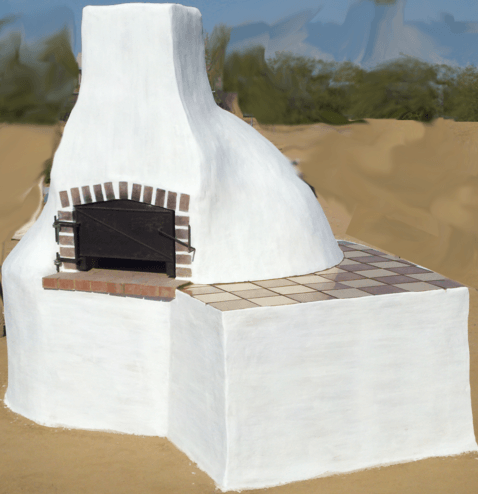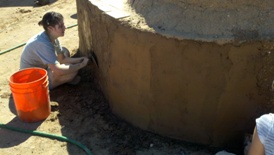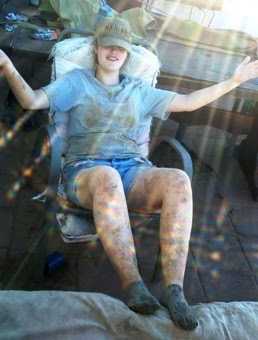So it was time to get back to working on the base. We were ready to begin plastering so we can seal the oven with the lime whitewash. I enlisted the help of my daughters Chrissy and Alexa. I showed them how to press and work the cob mix into the spaces and partially smooth it out. We learned early on that it helped a lot to keep the trowels clean and wet. If the cob mix is too dry that will cause a problem too as it will become sticky and as you drag and press it will stick to the trowel and pull off.
I also modified my standard cob mix. Instead of using 2 buckets of sand and 1 bucket of clay earth I added an additional 1/2 bucket of clay earth. I also used a screen to sift the sand and the clay earth. I found a screen that has about a 1/8th inch opening. That’s larger than a window screen but, smaller than the screen that I found at Home Depot or Lowe’s. I found the right size on the screen top that we had for an aquarium. It filtered out all of the larger stones that would be fine for the bricks but, not for a smooth finish. I also filtered the clay earth that I’m using. I wanted to make sure that all of the organic matter was removed along with any stones or large clods that wouldn’t let me get a nice plastered surface. I also found that adding extra water to the mix so that I could get the consistency of about soft icing was the best to use.
This modified mix gives you a nice dense and hard outer shell that once combined with the lime whitewash should be completely waterproof. With our monsoon rains here we need to be waterproof.












